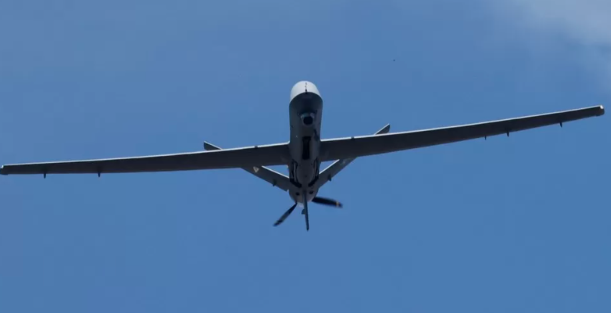Israel
US Drone Surveillance Confirmed Over Israel War Zone

In the skies above the embattled Gaza Strip, where the Israel war continues to reverberate on the ground, the steady hum of American unmanned aerial vehicles (UAVs) slices through the tension. Deployed by the United States, these drones, unarmed and watchful, have been confirmed by the Pentagon to aid in critical hostage recovery efforts. This latest development, disclosed by Pentagon spokesman Brig Gen Pat Ryder, sheds light on the strategic aerial operations unfurling above this war-torn region, hinting at the complexities and alliances that shape the current conflict.
The drones began their silent vigil over Gaza following the harrowing October 7 attacks by Hamas on Israel. The irony of these machines, known as MQ-9 Reapers — names that evoke images of death — being deployed not to bring destruction but to gather intelligence for rescue, is not lost on the discerning observer. Their flights were unveiled to the public eye not through official channels, but by the modern panopticon of flight-tracking websites, where anyone with internet access could see these Reapers’ spectral paths above Gaza.
The history of surveillance is as old as conflict itself. These latest sorties above Gaza reflect a continuum of the human need to know, to watch over adversaries — a practice harking back to the use of observation balloons in the Napoleonic Wars and beyond. In the sprawling history of Israeli-Palestinian tensions, intelligence has always been the hidden currency of power, traded in shadows, shaping outcomes far beyond what brute force could achieve.
For the beleaguered citizens of Gaza, the incessant buzz of unmanned aerial vehicles has become a mere backdrop to the grimmer theatrics of daily survival — a soundtrack so familiar it scarcely commands notice anymore. Here, the landscape bears the scars of conflict, and life limps along to the rhythm of scarcity and the memory of destruction.
In the eyes of Gazans, these drones — indifferent sentinels patrolling the skies — mark just another rotation of the earth, another span of hours spent under an omnipresent watch, the intentions of which are as obscure as the identities of those who control them. Each day is a masterclass in endurance, a testament to the human capacity to persist, even as dignity is worn away by the unyielding stare of technological specters that hover above.
Amidst this, the spirit of Gaza weaves a narrative of quiet defiance. People here have honed the art of living with adversity, their resourcefulness a beacon in the tumultuous storm of geopolitics. In this corner of the world, to survive is to resist, and every small act of normalcy is a victory against the nameless, faceless observers that tally their movements from the heavens.
The strategic ramifications of such surveillance are intricate. Drones like the Reaper can linger, almost languidly, above a zone, compiling hours of footage, offering a constant eye that no ground operation could hope to match. They link into the grander chessboard of Middle Eastern geopolitics, where information is a weapon as sharp as any missile. Such intelligence operations can underpin or undermine diplomatic endeavours, shaping the fates of hostages and nations alike.
The official narrative presents these drones as benign observers, detached from the kinetic actions of war. But in a region where truth is often a casualty, skepticism is a natural response. What narratives are being served here, and what agendas are advanced by these silent sentinels in the sky? It’s prudent to question the tapestry of official accounts, to look for the seams where truth might fray.
The Gaza Strip, with its patchwork of devastation and the resilient spirit of its inhabitants, provides a backdrop that is both heartbreakingly vivid and numbingly familiar. Against this canvas, drones like spectral artists sketch the invisible lines of modern warfare, where the battleground is as much about data and surveillance as it is about the physical clash of arms.
As the US confirms its drone operations over Gaza and the Navy boasts of unmanned surface vehicle tests, one must ponder the interwoven future of warfare, surveillance, and international diplomacy. These events do not merely mark a chapter in the saga of the Israeli-Palestinian conflict; they may well define the shape of confrontations to come.
In the grand scale of history, the flights of these unarmed drones may be but footnotes. Yet, the implications of their silent sojourns could echo through the corridors of power long after their rotors have stilled. What new realities will the data from these drones weave into the ever-complex tapestry of Middle Eastern affairs? That is the question that lingers, as persistent and as invisible as the drones themselves.












You must be logged in to post a comment Login